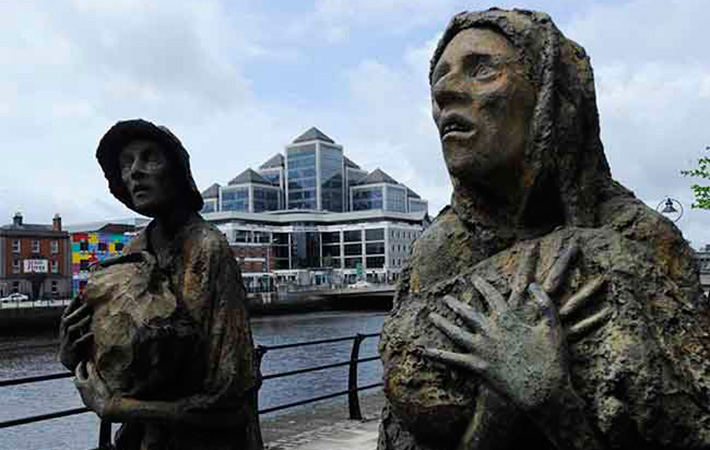If you could step into a time machine and travel back 170 years you would have witnessed a most distressing scene at the cross-roads in Castlemagner village. It was the time of the Great Irish Famine. While the fertile lands of Castlemagner parish meant that the local population did not succumb to the same mortal fate of their fellow country men and women, the procession of those less fortunate from other parts of county Cork wove a path to a soup kitchen ran from the present Castle Bar in Castlemagner. Its hard to imagine that the current pub building that bears witness to the social vagaries of modern village life was once the scene of such despair and death.
The soup kitchen was ran by my great-great-great-grandfather, another Geoffrey O’Donoghue. Geoffrey received permission from the local Protestant minister to operate the soup kitchen and he enlisted the help of the Catholic parish priest Fr John O’Riordan. Their generosity of spirit and selflessness in the face of disease and devastation is impossible for us to appreciate. In a bitter twist, Geoffrey and Fr O’Riordan contracted cholera (commonly referred to as the famine fever) from the famine victims that they served at the soup kitchen. They both died within 7 days of each other in the week of the 7 May 1847.
There was no Catholic graveyard in Castlemagner at the time. In fact, the local graveyard in Castlemagner did not come into being until 1926. Geoffrey was buried with his family in Kilfinane, Co Limerick where he hailed from.
There is a famine grave in Killbarrahan, large enough to hold 500 corpses. This was used in living memory for the burial of still born babies.
The memorial sculptures to ‘The Great Hunger’ on the Dublin Quays next to Dublin’s financial district serve as a stark reminder to us all of the suffering that afflicted this country during the famine. It reminds us that, despite the comfortable lives we have thanks to social and technological progress, we remain bound by a common humanity.

